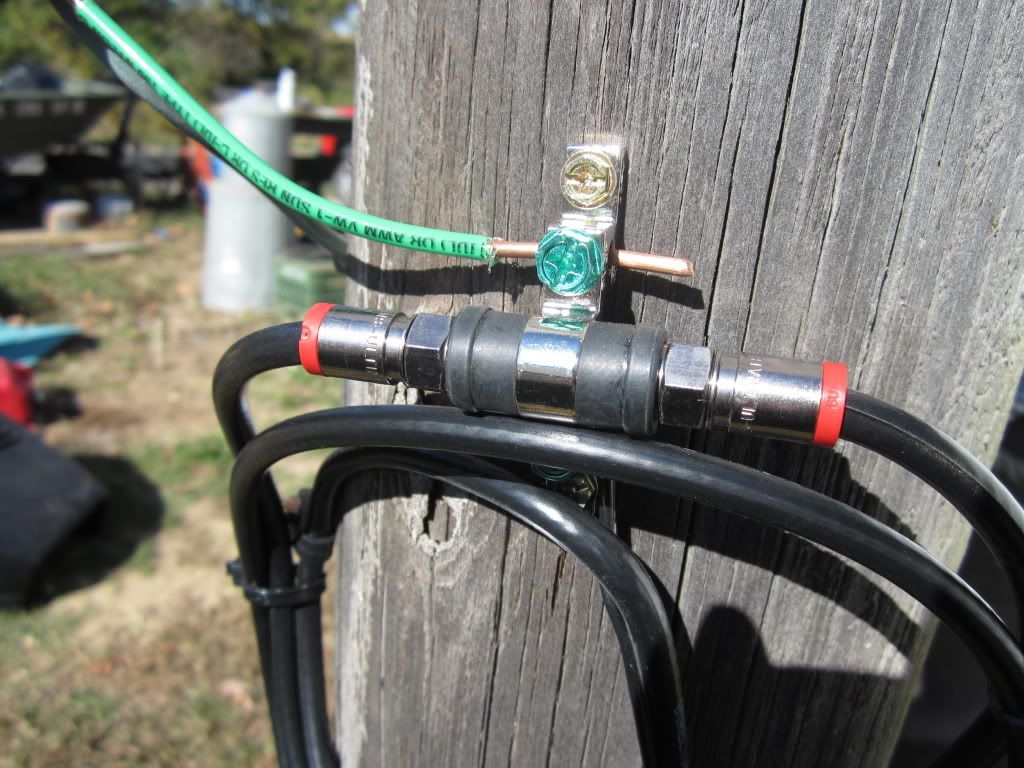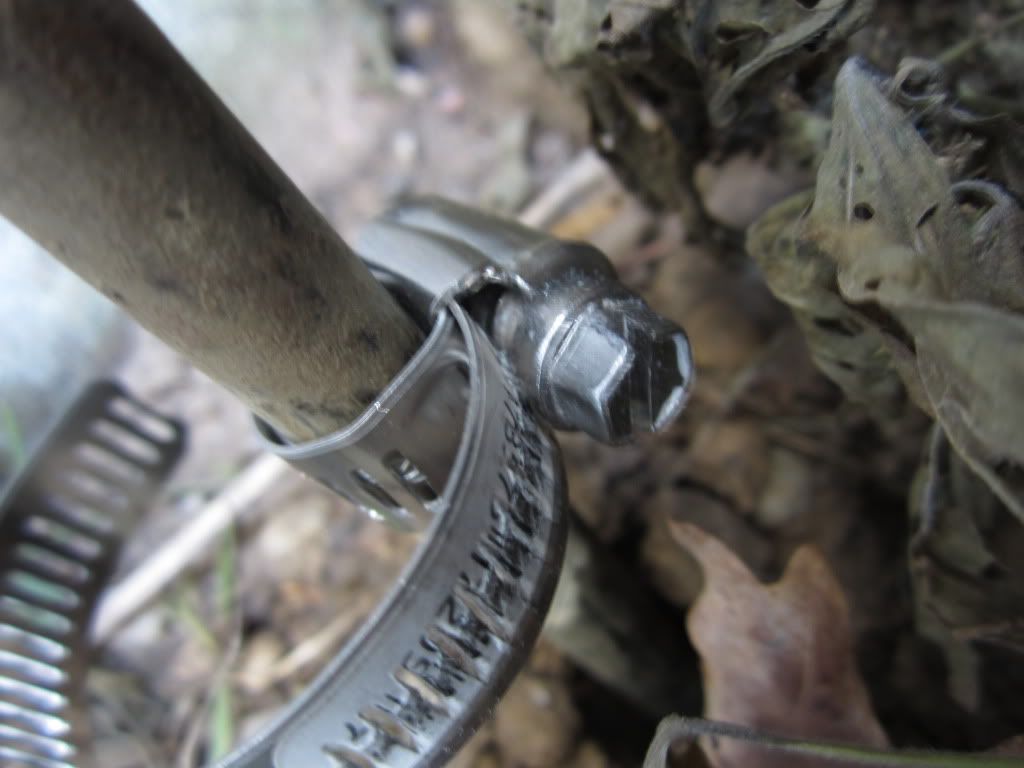Well I yanked the 75+ feet of coax going to the meter ground out. I installed a ground block under the soffit to keep it out of the rain more.
I hammered in a 5 foot ground rod (did not realize there was a spare in a pile of junk), into the ground close to the dish.
The ground wire is 10 gauge aluminum strand, which is about twice as thick as the messenger wire.
I ran the wire to the ground rod. The radiator clamp looks cheesemo, but I did not have the proper clamp.
I read that having 2 grounds on the property may cause a ground loop, but this ground is over 100+ feet away. I have seen main electrical grounds closer together in subdivisions. They were not bonded either.
All in all, a closer ground has been made for the dish, and I eliminated the long coax run.










